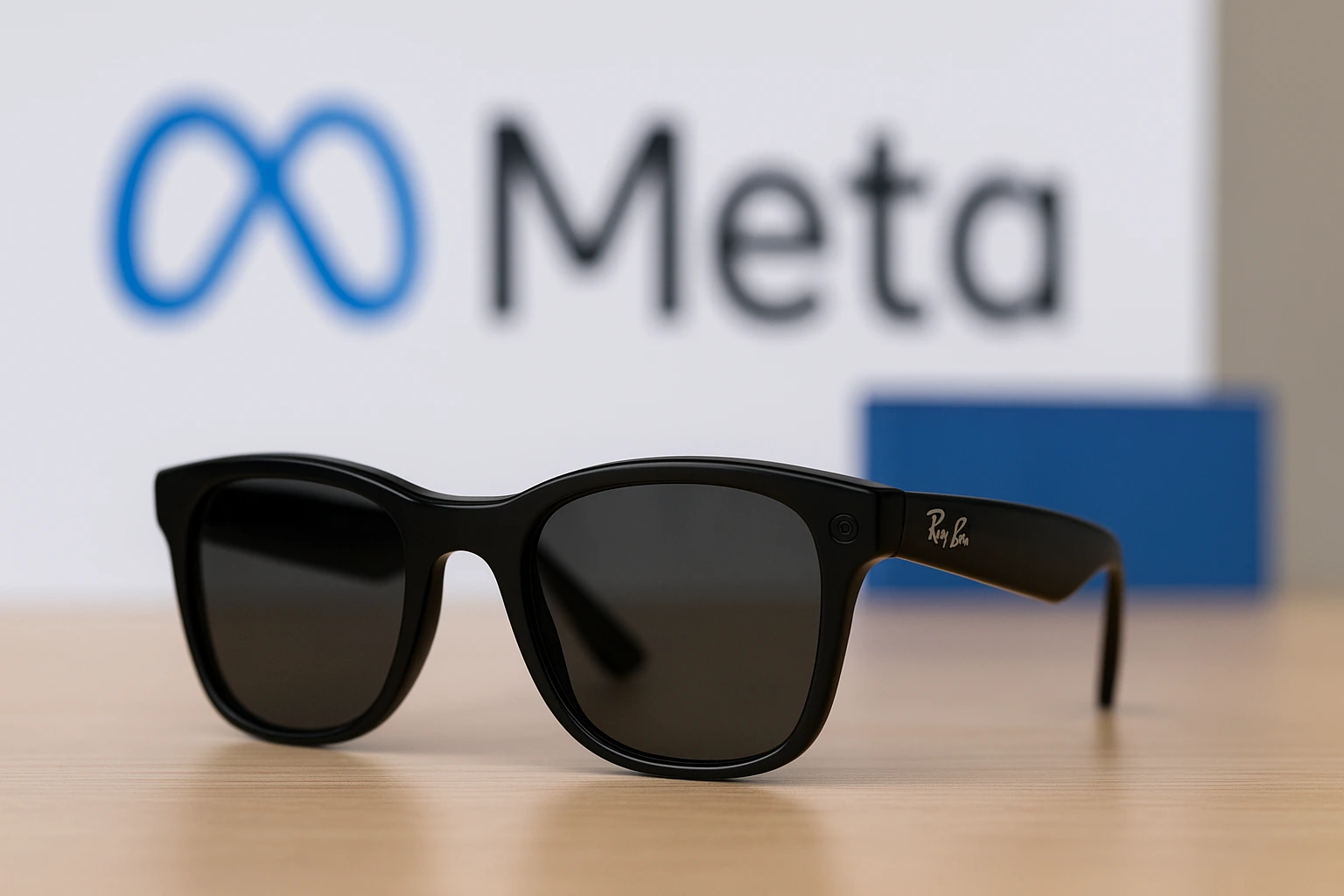PARIS — Shares of Essilor Luxottica, the Paris listed maker of Ray-Ban glasses, rose 14 percent Friday to reach an all time high, adding nearly $20 billion to the company’s market capitalization.
The surge came amid investor enthusiasm for the company’s AI powered Ray-Ban Meta smart glasses, developed in collaboration with Meta Platforms.
The company reported third quarter sales of 6.9 billion euros ($8.1 billion), an 11.7 percent increase from the same period last year. This marked its strongest quarterly performance on record and exceeded analysts’ expectations.
“This is a significant milestone for Essilor Luxottica, reflecting both our resilient core business and the growing traction of our wearable technology segment,” the company said in a statement Thursday.
The rise in shares follows the launch of Ray-Ban Meta smart glasses, featuring a built in display, upgraded cameras, and gesture based controls through Meta’s Neural Band. Retail prices range from $379 to $799 for the latest flagship models.
Although the smart glasses currently account for only a small fraction of total revenue, they have attracted significant attention from analysts and investors alike.
The product has revived interest in smart eyewear, a market that had previously seen limited success with early efforts from Google and Microsoft.
“Combining cutting edge AI with a brand as iconic as Ray-Ban creates a unique proposition that resonates with both tech enthusiasts and fashion conscious consumers,” said François Leclerc, an analyst at Equita.
Financial analysts are increasingly viewing the AI glasses as a major growth engine for Essilor Luxottica. JP Morgan noted in a research report that the wearable segment has become a “material growth driver,” complementing the company’s traditional eyewear business.
Equita analysts revised their forecasts for wearable sales upward, projecting the segment could contribute roughly one billion euros to total revenue this year.
“The acceleration in third quarter revenues and optimism for the upcoming quarters indicate that the company’s strategic investments in smart wearables are paying off,” Leclerc added.
The third quarter results exceeded market expectations of 6.7 billion euros in revenue. Sales in North America grew 12.1 percent year over year, while Europe, the Middle East, and Africa saw a 13 percent rise.
The performance was driven by strong demand for both traditional eyewear and emerging wearable products. “The performance demonstrates that EssilorLuxottica’s diversified portfolio continues to deliver robust growth,” said Marie Dubois, a market strategist in Paris.
Consumers have expressed enthusiasm for the new smart glasses. John Smith, a technology consultant in New York, said, “The glasses combine practical AI features with a style I would actually wear daily. That’s a rare combination.”
Emily Johnson, a fitness trainer in Los Angeles, noted the product’s potential in her profession. “Gesture controls and fitness tracking make it more than just eyewear it’s a tool for daily activity,” she said.
EssilorLuxottica plans to scale production of smart glasses to reach 10 million units annually, ahead of its original 2026 target. The company is also expanding availability to Canada, France, Italy, and Britain early next year.
The resurgence of AI-powered eyewear has reignited competition in the market, with Google, Samsung, and Apple reportedly developing their own smart glasses products.
Analysts say that while the market is still nascent, early movers like EssilorLuxottica could capture a substantial share.
“The wearable eyewear category is entering a phase of rapid evolution,” Leclerc said. “Innovation and timely market entry will determine which players dominate the space.”
EssilorLuxottica’s record performance highlights the growing consumer interest in AI integrated wearable technology.
By combining Meta’s AI capabilities with Ray-Ban’s iconic design, the company has positioned itself at the forefront of a potentially lucrative market.
As competition intensifies, EssilorLuxottica’s ability to maintain product innovation and expand global reach will be critical to sustaining growth in the smart eyewear segment.

